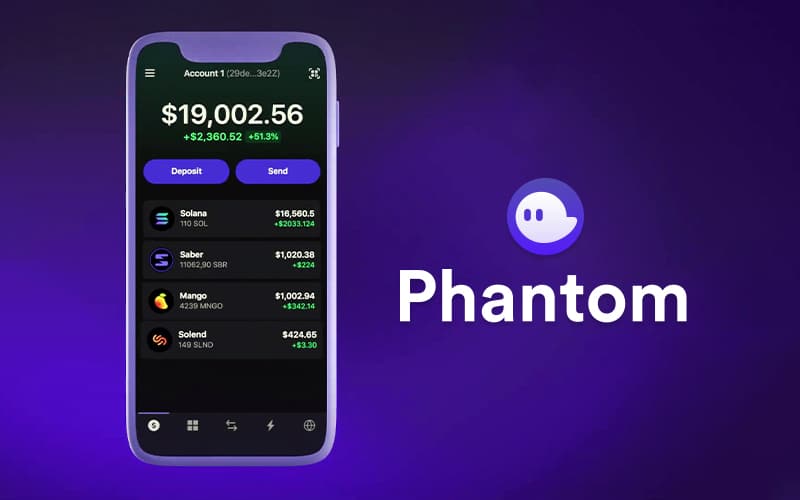In the evolving world of decentralized finance (DeFi), cryptocurrency wallets are indispensable tools for managing digital assets. Among the many options available, Phantom Wallet has garnered significant attention due to its user-friendly interface, integration with the Solana blockchain, and robust features designed for both beginners and experienced crypto enthusiasts. This article provides a comprehensive overview of phantom wallet, including its key features, benefits, and how to get started.
What is Phantom Wallet?
Phantom Wallet is a non-custodial cryptocurrency wallet primarily designed for the Solana blockchain. It allows users to store, send, receive, and manage Solana-based assets and tokens in a secure and user-friendly environment. While it initially gained popularity within the Solana ecosystem, Phantom Wallet now supports integration with Ethereum and Ethereum-compatible chains, expanding its usability.
Phantom is a browser extension wallet, which means it works seamlessly within popular web browsers like Google Chrome, Mozilla Firefox, and Microsoft Edge. It is designed to cater to individuals looking for a simple yet powerful tool to interact with decentralized applications (dApps), NFT platforms, and DeFi protocols.
Key Features of Phantom Wallet
- User-Friendly Interface: Phantom Wallet is known for its intuitive, clean interface that makes it easy for newcomers to the cryptocurrency world. With clear options for managing assets, sending/receiving tokens, and interacting with smart contracts, Phantom provides a seamless experience.
- Solana Blockchain Integration: As one of the leading wallets for the Solana blockchain, Phantom allows users to interact directly with Solana-based assets. This includes popular tokens like SOL (Solana’s native currency) and other Solana-based assets such as USDC, Serum, and NFTs.
- Support for Multiple Chains: While Phantom originally supported only Solana, it has expanded to support Ethereum and Ethereum-compatible chains, which has opened up more opportunities for users to manage assets from a broader array of blockchain ecosystems.
- Private Key Control: Phantom Wallet is a non-custodial wallet, meaning that users have full control over their private keys and funds. This is a significant advantage in terms of security, as users do not need to trust a third-party service with their assets.
- Integration with dApps and NFTs: Phantom Wallet is fully compatible with a wide variety of decentralized applications (dApps) built on the Solana blockchain. This includes lending platforms, decentralized exchanges (DEXs), and NFT marketplaces. Users can also mint, trade, and store NFTs directly in their Phantom wallet.
- Staking Features: Phantom Wallet offers users the ability to stake Solana’s SOL tokens. This allows users to participate in the network’s Proof-of-Stake (PoS) consensus mechanism and earn rewards for securing the blockchain.
- Built-in Swap Feature: Phantom has a built-in decentralized exchange (DEX) feature that allows users to swap tokens directly within the wallet. This functionality helps users avoid navigating external exchanges and simplifies the token trading process.
- Security: Phantom employs strong security measures, including encryption of private keys and integration with hardware wallets for added protection. Users also have the option to set up a passphrase for additional security.
- Cross-Platform Syncing: Phantom allows users to sync their wallets across devices. Whether accessing the wallet from a desktop or mobile device, users can manage their assets seamlessly across platforms.
How to Get Started with Phantom Wallet
- Install Phantom Wallet: To start using Phantom, the first step is to install the wallet extension on your browser. Phantom supports popular browsers like Google Chrome, Firefox, and Microsoft Edge. Simply visit the Phantom website and follow the installation instructions.
- Create a New Wallet or Import an Existing One: After installation, you can create a new wallet or import an existing wallet using a seed phrase. If you’re creating a new wallet, ensure you securely store your recovery phrase in a safe place. This will be crucial if you ever need to recover your wallet.
- Add Funds to Your Wallet: Once your wallet is set up, you can deposit Solana (SOL) or other supported tokens by transferring them from another wallet or exchange. Phantom offers easy instructions for transferring assets from popular exchanges like Binance or Coinbase.
- Start Interacting with dApps and NFTs: Phantom Wallet is designed for interacting with decentralized applications. You can easily connect to Solana-based dApps such as decentralized exchanges (DEXs), NFT platforms, and DeFi protocols. Additionally, you can buy, sell, or hold NFTs within your Phantom Wallet.
- Staking SOL Tokens: For those interested in staking, Phantom provides an easy way to stake SOL tokens directly within the wallet. Simply navigate to the staking section, select a validator, and stake your tokens to start earning rewards.


